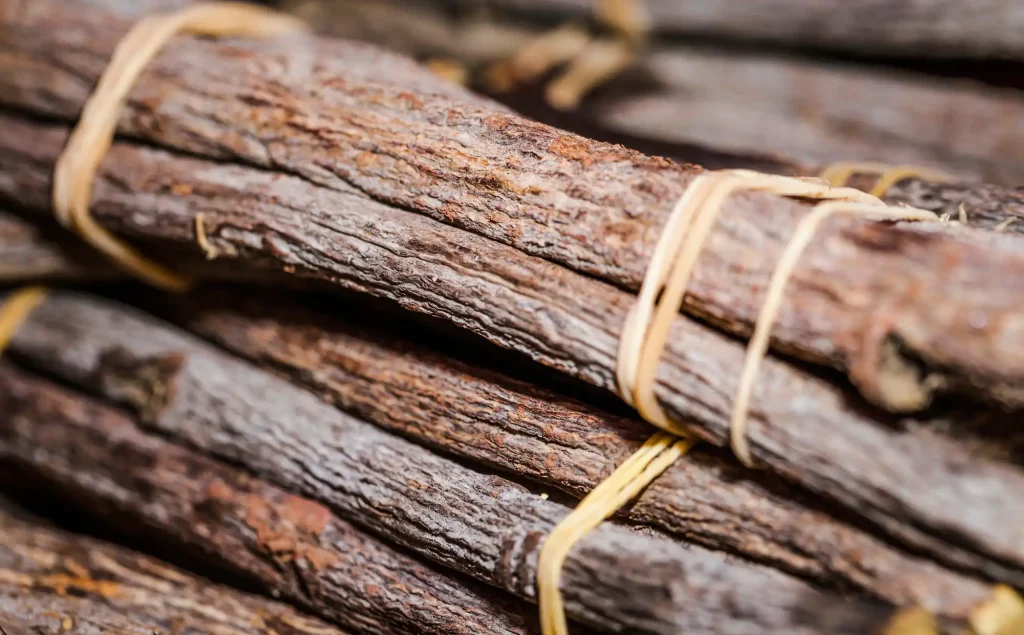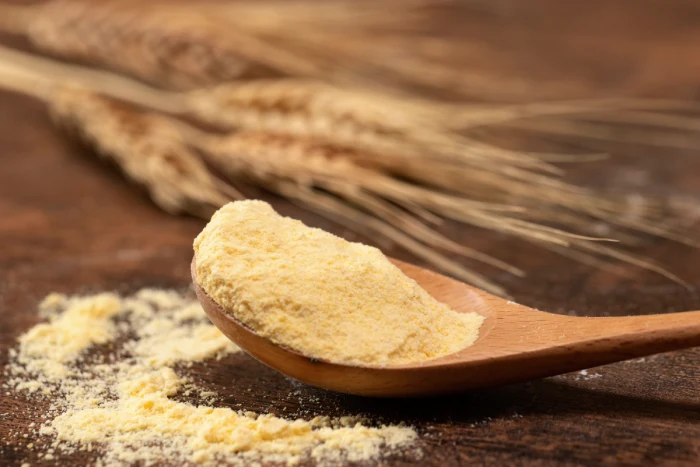Discovering the healing powers of nature has always fascinated me, and few plants have captured my attention quite like the white willow tree. As your trusted health and wellness writer, I’m excited to share everything you need to know about this remarkable natural remedy that’s been used for thousands of years. I’ve had the privilege of studying various traditional medicines, but the white willow consistently stands out for its impressive therapeutic potential and rich historical significance. The combination of ancient wisdom and modern scientific validation makes this plant particularly intriguing for those seeking natural alternatives to conventional medications.

Nature’s Aspirin: Understanding White Willow
The white willow (Salix alba) stands majestically along riverbanks and in wet areas across Europe and Asia, its silvery leaves dancing in the breeze. These remarkable trees can grow up to 70-80 feet tall, creating stunning natural landscapes while harboring powerful medicinal properties within their bark. What makes this tree truly special isn’t just its graceful appearance – it’s the remarkable compounds found within its bark that have earned it the nickname “nature’s aspirin.” The tree’s ability to thrive in challenging environments, often in water-logged soils where other species struggle, seems to mirror its resilience-boosting properties when used medicinally. This adaptability has made it a survivor through centuries of climate changes and environmental challenges, preserving its healing potential for modern generations to discover.
But how exactly does white willow work its magic? The secret lies in its bark, which contains salicin, a compound that our bodies convert into salicylic acid – the predecessor to modern aspirin. This fascinating connection between ancient herbal medicine and modern pharmaceuticals tells us something important: our ancestors were onto something significant when they turned to white willow bark for relief. The conversion process of salicin to salicylic acid occurs gradually in our bodies, which may explain why many people report experiencing fewer side effects compared to synthetic aspirin. This natural time-release mechanism, combined with the presence of complementary compounds like flavonoids and polyphenols, creates a synergistic effect that modern science is still working to fully understand.
The Ancient Roots of White Willow
Did you know that Hippocrates, the father of modern medicine, recommended chewing on white willow bark to reduce fever and inflammation? This ancient Greek physician’s writings from around 400 BCE provide detailed accounts of how white willow bark was prescribed for pain relief and fever reduction. The use of white willow tree extracts dates back even further, with evidence of its medicinal use found in ancient Egyptian medical texts and artifacts. Native American healers independently discovered the pain-relieving properties of various willow species, incorporating them into their traditional medicine practices. These diverse cultures, separated by vast distances and time, all recognized the unique healing properties of white willow, using various preparation methods from teas and tinctures to poultices and powders. This widespread historical use across different civilizations provides compelling evidence for its effectiveness and safety when used appropriately.
The Science Behind the Bark
Modern research has validated what traditional healers knew intuitively, providing detailed insights into the mechanisms that make white willow bark such an effective natural remedy. The scientific community has conducted numerous studies investigating the bioactive compounds present in white willow bark and their interactions with human physiology. What’s particularly fascinating is how these compounds work synergistically – meaning they’re more effective together than they would be individually. This phenomenon, known as the entourage effect, helps explain why whole plant extracts often provide better results than isolated compounds.
Salicin and Other Active Compounds
The star player is salicin, but it’s not working alone in white willow bark’s complex phytochemical profile. Researchers have identified over two dozen bioactive compounds, including various flavonoids, tannins, and polyphenols that contribute to its therapeutic effects. Unlike synthetic aspirin, which hits the body with a single concentrated dose of acetylsalicylic acid, these natural compounds are released gradually in our bodies through a sophisticated metabolic process. This slower release mechanism, combined with the presence of anti-inflammatory flavonoids and protective antioxidants, potentially results in fewer side effects while maintaining therapeutic efficacy. Recent studies have shown that these complementary compounds may also help protect the gastric mucosa, potentially reducing the risk of stomach irritation commonly associated with conventional pain relievers.
White Willow Bark Benefits: More Than Just Pain Relief
Pain Management and Inflammation
Extensive clinical trials and systematic reviews suggest that white willow bark may effectively manage various types of pain, from chronic lower back discomfort to osteoarthritic conditions. The multi-faceted approach of white willow bark’s natural compounds works through several pathways to reduce inflammation and modulate pain signals. Unlike synthetic pain relievers that often provide quick but short-lived relief, white willow bark’s effects typically develop more gradually but can last longer. This sustained action makes it particularly valuable for managing chronic conditions where long-term use of conventional pain relievers might pose risks. Studies have shown that regular use of white willow bark extract can reduce dependence on conventional painkillers, with some users reporting improved quality of life and increased mobility over time.
White Willow Bark for Anxiety: A Calming Influence
Recent research has revealed an unexpected benefit of white willow bark – its potential impact on anxiety and stress response. While the exact mechanisms aren’t fully understood, scientists believe the interaction between salicin and the body’s natural stress response systems may play a role. Several small-scale studies have documented reduced cortisol levels and improved stress markers in participants using white willow bark supplements regularly. Users frequently report experiencing a gentle sense of calm without the drowsiness often associated with conventional anti-anxiety medications. This discovery opens up exciting possibilities for individuals seeking natural alternatives for managing everyday stress and anxiety, though more research is needed to fully understand this aspect of white willow’s benefits.
Skin Benefits: Nature’s Beauty Secret
One of the most exciting frontiers in white willow bark research involves its dermatological applications. The natural salicylates found in white willow bark demonstrate remarkable skin-enhancing properties that have caught the attention of both researchers and skincare formulators. These compounds work through multiple mechanisms to improve skin health:
– They help regulate sebum production, making them particularly beneficial for oily and acne-prone skin
– The anti-inflammatory properties can help reduce redness and irritation
– The natural form of salicylic acid gently exfoliates dead skin cells, promoting cell turnover
– Antioxidant compounds help protect against environmental damage and premature aging
Clinical studies have shown significant improvements in skin texture, tone, and clarity with regular use of white willow bark-based products. Additionally, its natural origin often makes it a gentler alternative to synthetic salicylic acid, potentially reducing the risk of irritation while maintaining effectiveness.
Forms and Usage: How to Incorporate White Willow
White Willow Bark Tea
For those who prefer a traditional approach, white willow bark tea offers a gentle and customizable way to experience its benefits. The art of preparing this therapeutic tea has been refined over generations, with different cultures developing their own methods to maximize its beneficial properties. To prepare an optimal brew, steep 1-2 teaspoons of dried bark in water heated to just below boiling (around 190°F/88°C) for 10-15 minutes. This temperature and steeping time allow for optimal extraction of the active compounds without releasing excess tannins that could make the tea overly bitter. While the natural taste is somewhat bitter with woody undertones, many users find that adding a touch of raw honey not only improves the flavor but may also enhance the anti-inflammatory properties. For those sensitive to bitter flavors, combining white willow bark tea with peppermint or licorice root can create a more palatable beverage while potentially offering additional therapeutic benefits.
White Willow Bark Capsules
In our fast-paced modern world, many people opt for white willow bark capsules as their preferred delivery method. When selecting the best white willow bark supplement, look for products standardized to contain 15% salicin, as this concentration has shown optimal effectiveness in clinical studies. High-quality capsules should use vegetarian capsules and be free from unnecessary fillers or artificial additives. The recommended dosage typically ranges from 240mg to 480mg of standardized extract taken 1-2 times daily, though individual needs may vary. What sets superior capsule formulations apart is their enteric coating, which helps protect the active compounds from stomach acid and ensures better absorption in the intestines. Some advanced formulations also include complementary ingredients like turmeric or boswellia, which may enhance the anti-inflammatory effects through different mechanisms of action.

White Willow Bark Powder
The versatility of white willow bark powder makes it a favorite among those who prefer to customize their supplementation routine. Quality white willow bark powder should have a light tan color and a slightly woody aroma, with a fine, consistent texture that indicates proper processing and handling. This form offers unique advantages for both internal and external applications. When used internally, the powder can be easily incorporated into smoothies, herbal blends, or homemade capsules. For skincare applications, the powder can be mixed with natural carriers like honey, aloe vera, or hydrosols to create custom masks and treatments. Advanced users often combine the powder with other beneficial herbs like marshmallow root for inflammation or calendula for skin healing, creating synergistic blends tailored to their specific needs.
White Willow Sap
Though less commonly available, white willow sap represents one of the most traditional forms of using this remarkable tree’s healing properties. Historically, indigenous peoples would harvest the sap during specific seasons when the concentration of active compounds was highest. The clear, slightly sticky liquid contains a unique profile of compounds that may offer benefits different from those found in the bark. However, harvesting requires considerable expertise and must be done sustainably to avoid damaging the tree. Modern extraction methods have been developed to collect the sap while preserving the tree’s health, but these processes are complex and time-consuming, which explains the limited availability and higher cost of sap-based products. When available, white willow sap is often incorporated into high-end skincare formulations, particularly those targeting inflammation and aging concerns.
Let me wrap up this comprehensive guide to white willow with some final key points about making informed choices for your wellness journey.
Choosing Quality Products: The Bottom Line
When selecting white willow products, the market offers numerous options, but quality should always be your primary consideration. Look for manufacturers who prioritize sustainable harvesting practices and maintain rigorous quality control standards throughout their production process. Third-party testing certificates and standardization of active compounds (particularly that 15% salicin content we discussed) serve as reliable indicators of product quality. The reputation of the manufacturer, verified through industry certifications and customer feedback, provides additional assurance of product reliability.
Final Thoughts and Recommendations
As we’ve explored throughout this guide, white willow represents a fascinating bridge between traditional wisdom and modern science in natural medicine. Its versatility – from pain management to skin care – makes it a valuable addition to a holistic wellness routine when used appropriately. However, remember that natural doesn’t always mean risk-free. Always begin with conservative doses, pay attention to how your body responds, and maintain open communication with healthcare providers, especially if you’re taking other medications.
The future of white willow research appears promising, with ongoing studies continuing to uncover new potential benefits and applications. As interest in natural alternatives to synthetic medications grows, this ancient remedy may play an increasingly important role in modern healthcare approaches.
For optimal results and safety, consider these fundamental guidelines:
– Start with products from well-established, reputable manufacturers
– Follow recommended dosage guidelines carefully
– Monitor your body’s response when first introducing white willow products
– Maintain consistent communication with your healthcare provider
– Support sustainable practices through conscious purchasing decisions
Remember, the journey to natural wellness is personal and unique to each individual. White willow offers various options to support your health goals, but finding the right approach may require some patience and experimentation under proper guidance.



